Quote of the Month:
“Nature gives to every time and season some beauties of its own." - Charles Dickens
“Nature gives to every time and season some beauties of its own." - Charles Dickens
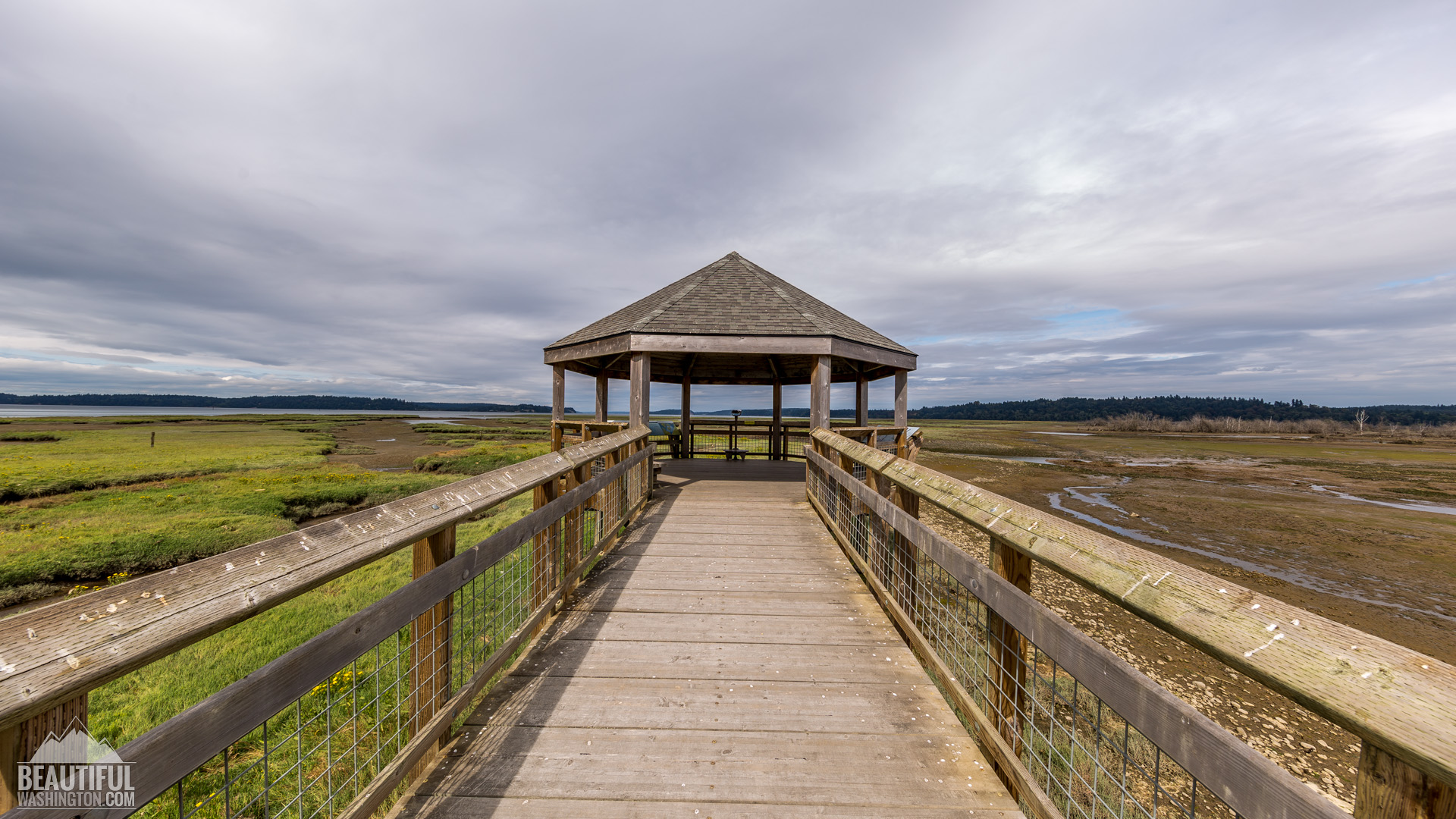
The creation of the National Wildlife Refuge System has started in the middle of the 19th century, when the public started realizing that unrestricted killing of wildlife and demolition of its habitat was systematically leading to the destruction of the irrecoverable national natural heritage. On June 30, 1864 the Act of Congress was enacted, which passed the Yosemite Valley from the common property to California State. This was, actually, the first Federal Act, the partial aim of which was to protect the wildlife inhabiting the assigned territory.
But the first wildlife refuge (it actually was Pelican Island National Wildlife Refuge) was established on March 14, 1903 by an Executive Order of Theodore Roosevelt. Since then the National Wildlife Refuge System, managed now by U.S. Fish and Wildlife Service, grew up significantly, comprising now more than 560 wildlife refuges all over the United States, and providing habitat to more than 700 bird species, 220 mammal species, 250 species of reptiles and amphibians and more than a thousand of fish species. Except for nature preservation, wildlife refuges also provide now various recreation opportunities, like hunting and fishing, numerous hiking trails, education and interpretation, wildlife observation and of course photography.
The first wildlife refuge established in the State of Washington was Quillavute Needles Wildlife Refuge, which was granted its status in far away 1907 and was among the first ten wildlife refuges established in the US. Now the number of national wildlife refuges in the State of Washington has increased up to 23 wildlife refuges and Hanford Reach National Monument, which is operated as a part of the Mid-Columbia River National Wildlife Refuge Complex. Below you will find their list with a short description.
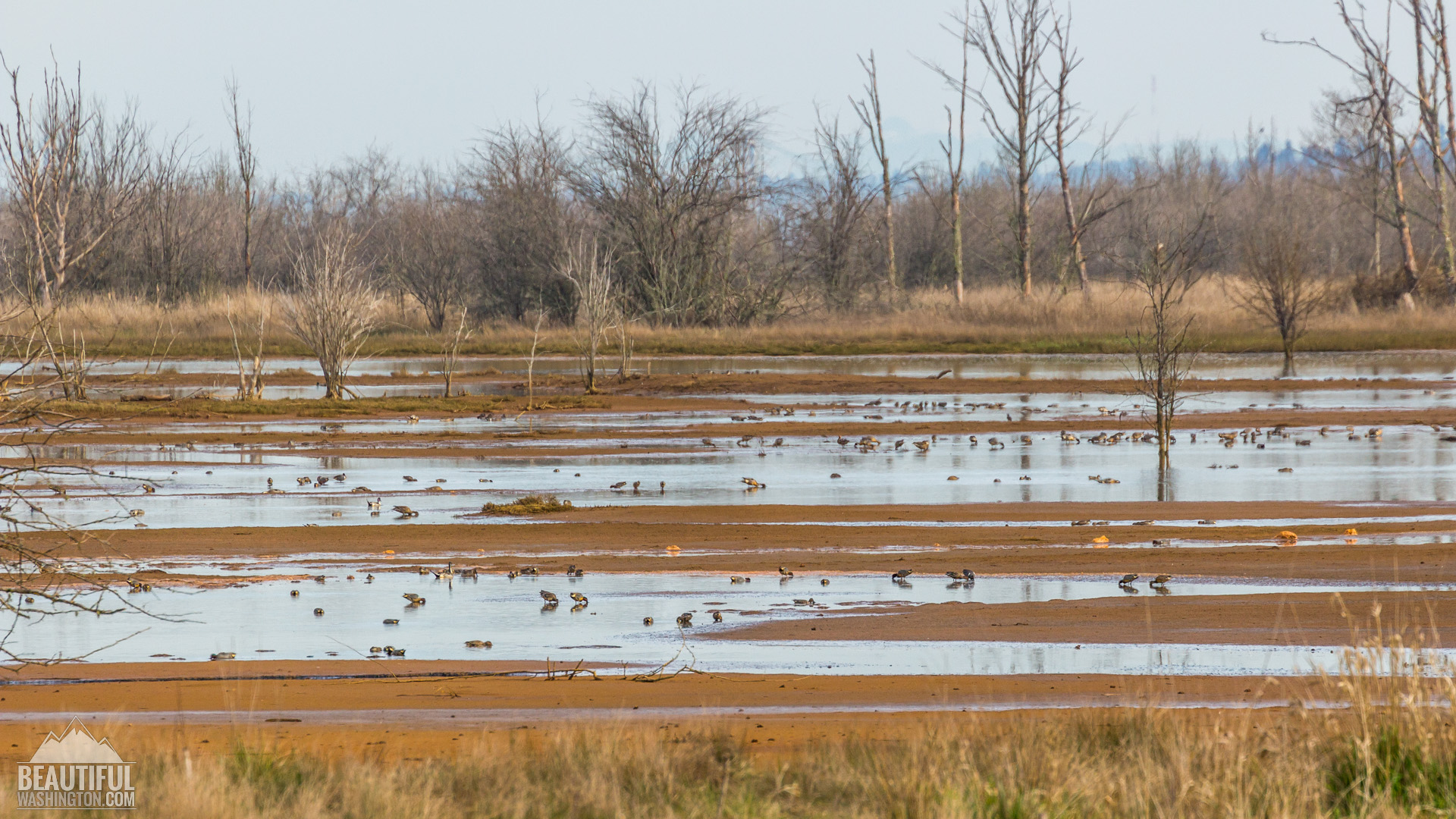
1. Columbia National Wildlife Refuge, established in 1944 within the channeled scrublands of the Columbia Basin, is located at the territories of Grant and Adams Counties. In 1986 its northern part, known as the Drumheller Channels (which can be found just southwards of Potholes Reservoir), was recognized as the National Natural Landmark.
2. Conboy Lake National Wildlife Refuge is one of the gems of the South Cascades. Located at the bottom of Mount Adams (in Klickitat County), this scenic wildlife refuge occupies the territory of more than 7,000 acres on the lakebeds of the by-gone Conboy Lake and Camas Lake at the south-western part of Yakama Nation Reservation. Deer, elks, coyotes, beavers as well as more than 150 bird species may be found among the wildlife species inhabiting the refuge.
3. Copalis National Wildlife Refuge is one of 3 wildlife refuges of coastal Washington, comprising the Washington Maritime National Wildlife Refuge Complex. This refuge, together with Flattery Rocks National Wildlife Refuge and Quillavute Needles National Wildlife Refuge was among the first established wildlife refuges of the United States, and received its status in 1907. Washington Maritime National Wildlife Refuge Complex includes about 800 islands, reefs and rocks, which can be found along the shore from Cape Flattery to Copalis Head. Copalis Refuge is the southernmost one out of three and is located within the territory of Quinault Reservation in Grays Harbor County.
4. Dungeness National Wildlife Refuge is located on the Olympic Peninsula, in Clallam County. Established in 1915, this 772,52-acre refuge is nesting on a 5.5-mile long Dungeness spit, and also includes a part of Dungeness Bay. This peaceful refuge is one of the favorite places for family outings and various recreational activities.
5. Flattery Rocks National Wildlife Refuge is one of 3 wildlife refuges of coastal Washington, comprising the Washington Maritime National Wildlife Refuge Complex. This refuge, together with Copalis National Wildlife Refuge and Quillavute Needles National Wildlife Refuge was among the first established wildlife refuges of the United States, and received its status in 1907. Washington Maritime National Wildlife Refuge Complex includes about 800 islands, reefs and rocks, which can be found along the shore from Cape Flattery to Copalis Head. Flattery Rocks Refuge is the northernmost one out of three and is located in Clallam County.
6. Franz Lake National Wildlife Refuge was created in 1990 and occupies the territory of 590 acres on the shores of Franz Lake, along the northern bank of the Columbia River. It is most famous for the plentitude of tundra swans which can be seen there seasonably, as well as other migratory birds. The viewing platform just off the SR 14 will provide you with great scenery of the refuge. Franz Lake National Wildlife Refuge is a part of the Ridgefield National Wildlife Refuge Complex, with the headquarters in Ridgefield.
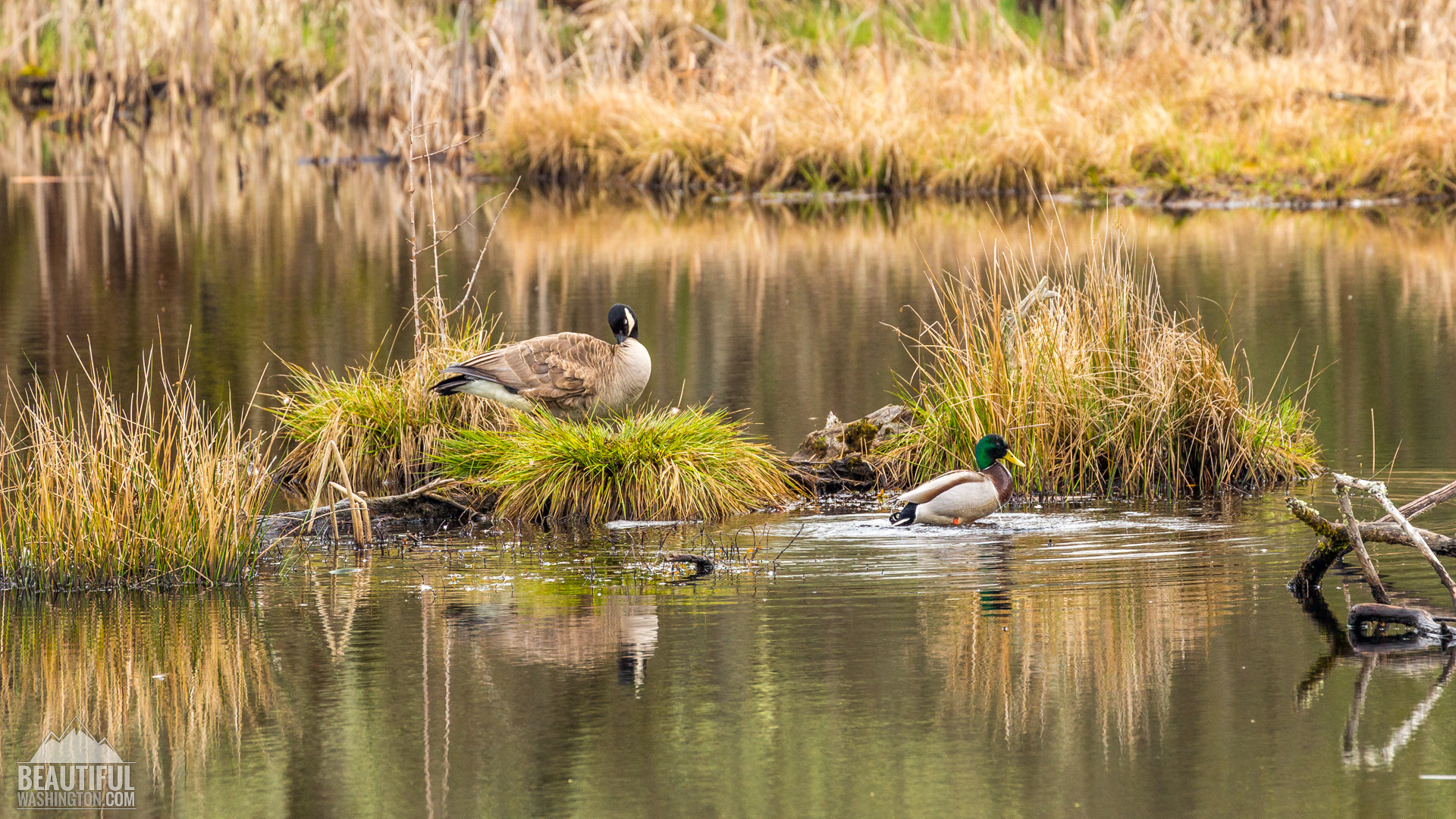
7. Grays Harbor National Wildlife Refuge can be found in Grays Harbor. Established in 1990, Grays Harbor National Wildlife Refuge is one of four main stopover sites for the shorebirds in the whole Northern America. In 1996 it was granted the status of internationally significant site of Western Hemisphere Shorebird Reserve Network.
8. Hanford Reach National Monument is one of 2 National Monuments in the United States, partially (165,000 acres out of the total area of 196,000 acres) managed by the U.S. Fish and Wildlife Service. It was established in the year 2000 and is located around the Hanford Nuclear Reservation. This place is well-known for the elk and more than 40 fish species (among which are also some threatened species).
9. Julia Butler Hansen Refuge for the Columbian White-Tailed Deer received its status of a preserved area in 1971. The main purpose of this almost 6,000-acre sanctuary, located on the banks of the Columbia River just north of Cathlamet (Wahkiakum County) and on several islands of the Columbia River (Clatsop County of Oregon State), is to protect the Columbian white-tailed deer, which is included in the endangered species list.
10. Lewis and Clark National Wildlife Refuge consists of about 20 islands, located on the Columbia River. Most of the islands can be found at the territory of Oregon State, but some are located at the territory of Washington State. The Refuge was created in 1972 in order to conserve the wildlife and various fish species of the estuary of the Columbia River. The islands of Lewis and Clark National Wildlife Refuge can be accessed only by boat that is why the refuge is quite rarely visited.
11. Little Pend Oreille National Wildlife Refuge. Created in 1939, this amazing wildlife refuge, which is the largest in the State Washington with the area of 40,198 acres, is located mostly on the territory of Stevens County, only with a small part of it reaching Pend Oreille County. Little Pend Oreille National Wildlife Refuge is home for various large mammals (including deer, bear, moose, cougar), and numerous migrant songbirds use this refuge as a staging area.
12. McNary National Wildlife Refuge, created in 1956, occupies the territory of 15,000 acres along the eastern bank of the Columbia River from the place where the Snake River meets the Columbia River extending south to the very Walla Walla River offing. It is usually called an “urban refuge” as it is located within the territory of Burbank and close to three quickly developing cities of Richland, Kennewick and Pasco. This incredible refuge is well-known for the abundance of various waterfowl species.
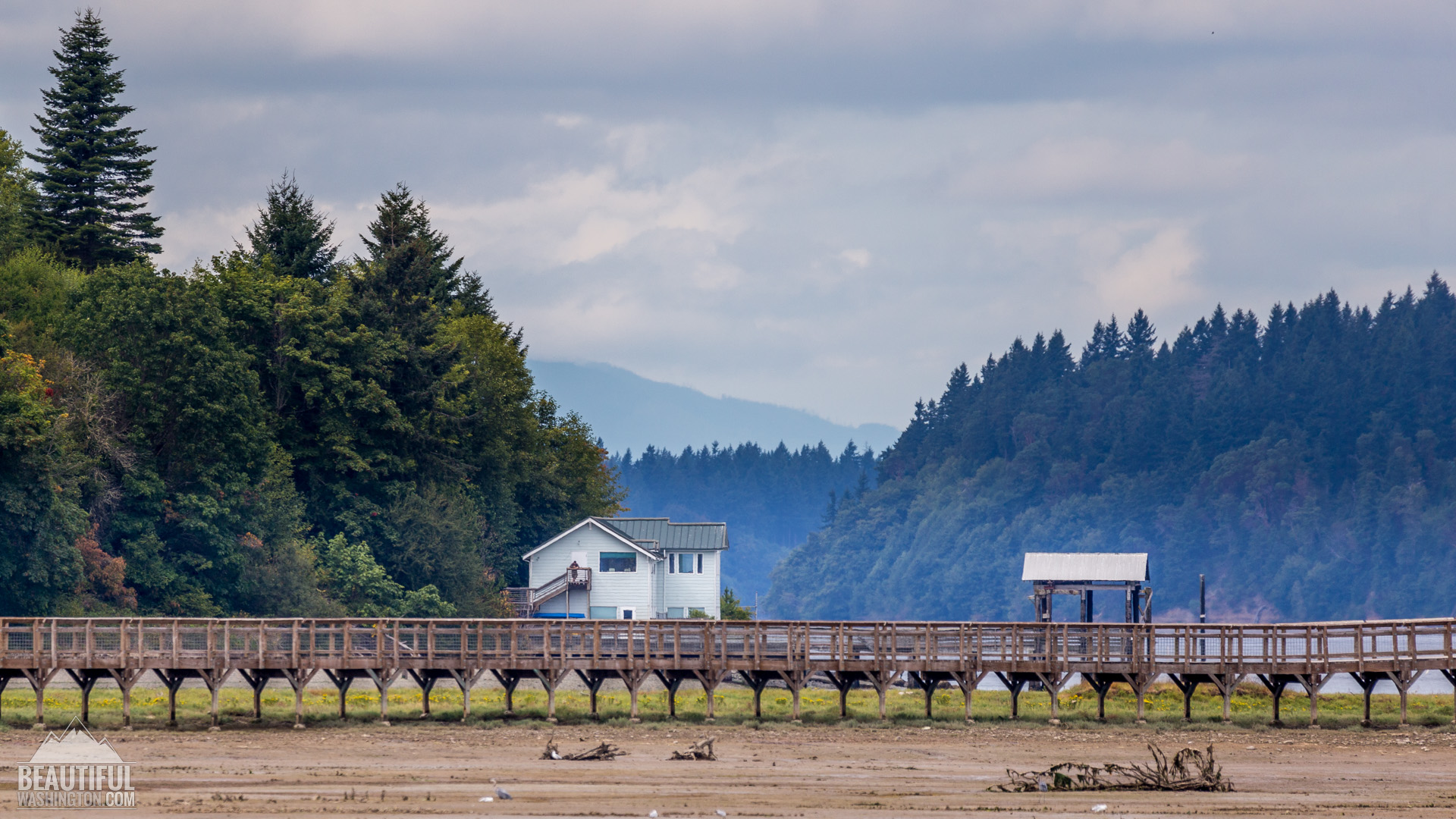
13. Nisqually National Wildlife Refuge was created in 1974, at the place where Nisqually River runs into Puget Sound (Thurston and Pierce Counties, just in-between Olympia and Tacoma), to protect the variety of fish species and wildlife living there as well as migrating birds. Now this unique place, where the Nisqually River’s freshwater interflows with the Puget Sound saltwater, thus creating an estuary, which is considered to be the largest relatively inviolate estuary in Washington State, became the favorite place for wildlife watching. It provides the visitors with the remarkable views of salt and freshwater marshes, mudlands and grasslands, as well as wonderful riparian woodland, where a great diversity of waterfowl, songbirds, raptors and shorebirds are nesting or resting during their migration.
14. Pierce National Wildlife Refuge. This 329-acre refuge can be found in Skamania County, on the northern bank of the Columbia River, just westward of North Bonneville. This sanctuary is the most known for the Canada geese, wintering there, and one of the last remaining chum salmon run on Hardy Creek. Pierce National Wildlife Refuge is located within the territory of the Columbia River Gorge National Scenic Area, and is adjoining the Beacon Rock State Park. Pierce National Wildlife Refuge is a part of the Ridgefield National Wildlife Refuge Complex, with the headquarters in Ridgefield
15. Protection Island National Wildlife Refuge is located on Protection Island, in the Strait of Juan de Fuca, near the entrance to the Discovery Bay, at the territory of Jefferson County. The especial significance of this wildlife refuge is presented to rhinoceros auklet and various burrow-nesting seabirds. The access to the refuge is closed for the visitors, but it can be viewed from a boat.
16. Quillavute Needles National Wildlife Refuge is one of 3 wildlife refuges of coastal Washington, comprising the Washington Maritime National Wildlife Refuge Complex. This refuge, together with Copalis National Wildlife Refuge and Flattery Rocks National Wildlife Refuge was among the first established wildlife refuges of the United States, and received its status in 1907. Washington Maritime National Wildlife Refuge Complex includes about 800 islands, reefs and rocks, which can be found along the shore from Cape Flattery to Copalis Head. Quillavute Needles Refuge is located in the middle between two other refuges, in Clallam and Jefferson Counties.
17. Ridgefield National Wildlife Refuge, occupying the territory of about 5300 acres in Clark County, was established in 1965 in order to create a wintering place for waterfowl (especially for dusky Canada geese). The refuge is divided into 5 sections and only two sections are opened for visiting. Ridgefield National Wildlife Refuge is also a part, constituting the Ridgefield National Wildlife Refuge Complex, with the headquarters in Ridgefield.

18. Saddle Mountain National Wildlife Refuge was created in 1971. This wildlife refuge, occupying the territory of 32,000 acres, is now a part of the Hanford Reach National Monument and can be found at the western part (West Wahluke Unit).
19. San Juan Islands National Wildlife Refuge, with its area of about 450 acres, is located in 4 counties (Whatcom, San Juan, Island and Skagit). It includes 83 islands, rocks and reefs situated within the San Juan Archipelago (only Smith Island and Minor Island are located in the Strait of Juan de Fuca, southwards of the archipelago). Only 2 islands within this wildlife refuge (Turn Island and Matia Island, which are also 2 State Parks) are opened for visitation.
20. Steigerwald Lake National Wildlife Refuge, located on the bank of the Columbia River, less than 10 miles eastwards of Vancouver, occupies the territory of 1,049 acres in Clark County. The first part of the refuge was established in 1987, with other parts being added to it later. Reed Island State Park can be found just opposite this wildlife refuge, in the Columbia River. Steigerwald Lake National Wildlife Refuge is also a part of the Ridgefield National Wildlife Refuge Complex, with the headquarters in Ridgefield.
21. Toppenish National Wildlife Refuge can be found at the eastern side of the Yakama Nation Reservation, in the Yakima Valley. Its 1,978-acre territory, located in Yakima County, is extremely important for the migratory birds, especially for waterfowl.
22. Turnbull National Wildlife Refuge occupies the territory of 18,217 acres within the unique Channeled Scrablands of Spokane County. It can be easily found less than 5 miles southward of Cheney. Created in 1937, this refuge is of significant importance for the migratory birds and waterfowl of Eastern Washington.
23. Umatilla National Wildlife Refuge, created in 1969, is located on the banks of the Columbia River. Its 23,555-acre territory is located in Oregon and Washington States. The refuge consists of 5 units, three of them can be found in Washington State (Benton County), and two – in Oregon (Morrow County). Umatilla National Wildlife Refuge is full of wildlife, with abundant number of bird species, and is very popular among the visitors.
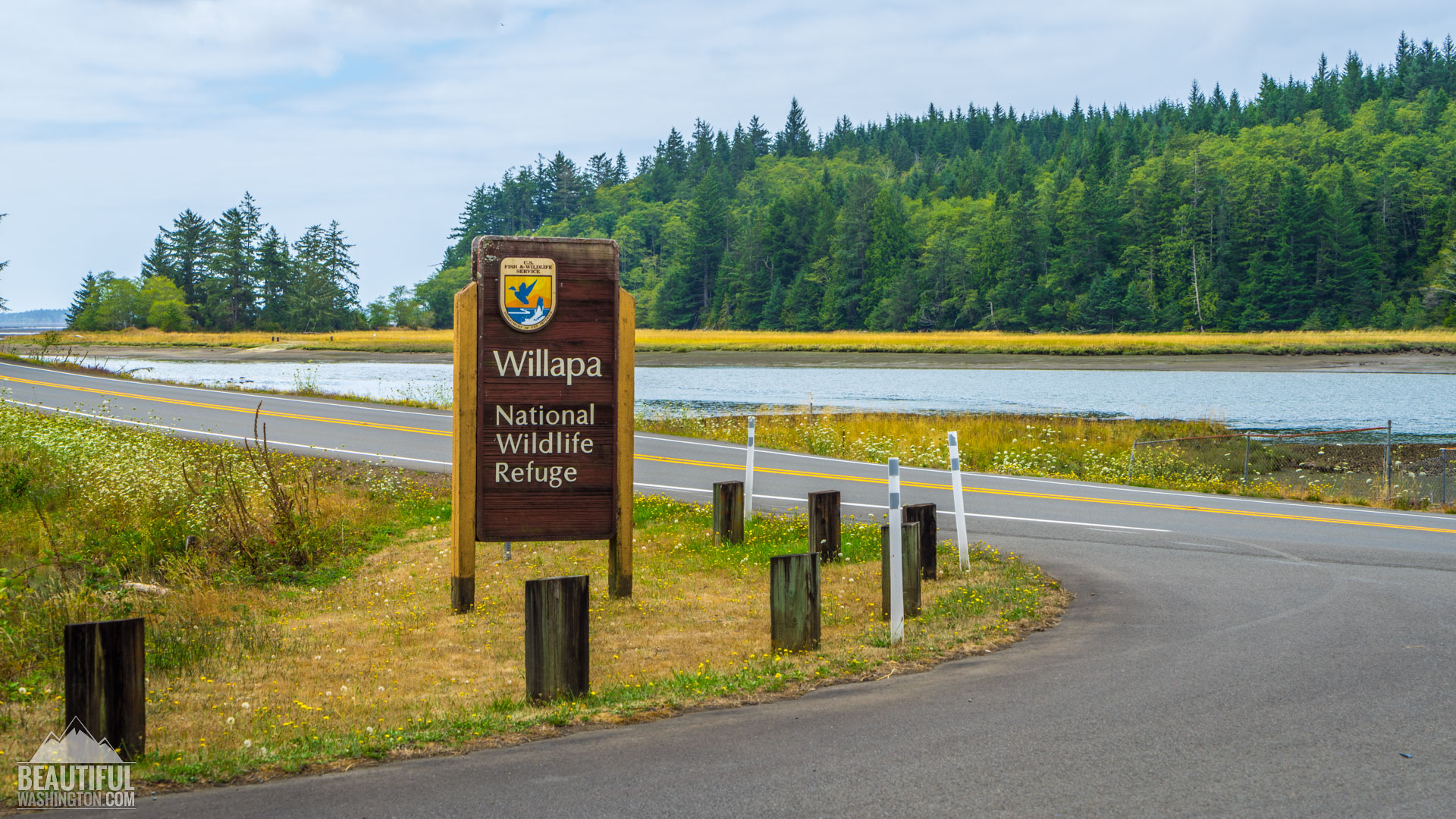
24. Willapa National Wildlife Refuge, created in 1937, can be found on the shores of Willapa Bay, which is considered to be one of the most primeval and undisturbed estuaries in the US. Its 11,000-acre territory, located in Pacific County, is highly popular among the visitors due to the easy access (by Highway 101), incredible beauty of the area and abundant wildlife inhabiting it.
 Nisqually National Wildlife Refuge 1
Nisqually National Wildlife Refuge 1
Nisqually National Wildlife Refuge 1
Nisqually National Wildlife Refuge 1
 Nisqually National Wildlife Refuge 2
Nisqually National Wildlife Refuge 2
Nisqually National Wildlife Refuge 2
Nisqually National Wildlife Refuge 2
 Nisqually National Wildlife Refuge 3
Nisqually National Wildlife Refuge 3
Nisqually National Wildlife Refuge 3
Nisqually National Wildlife Refuge 3
 Nisqually National Wildlife Refuge 4
Nisqually National Wildlife Refuge 4
Nisqually National Wildlife Refuge 4
Nisqually National Wildlife Refuge 4
 Nisqually National Wildlife Refuge 5
Nisqually National Wildlife Refuge 5
Nisqually National Wildlife Refuge 5
Nisqually National Wildlife Refuge 5
 Nisqually National Wildlife Refuge 6
Nisqually National Wildlife Refuge 6
Nisqually National Wildlife Refuge 6
Nisqually National Wildlife Refuge 6
 Nisqually National Wildlife Refuge 7
Nisqually National Wildlife Refuge 7
Nisqually National Wildlife Refuge 7
Nisqually National Wildlife Refuge 7
 Nisqually National Wildlife Refuge 8
Nisqually National Wildlife Refuge 8
Nisqually National Wildlife Refuge 8
Nisqually National Wildlife Refuge 8
 Nisqually National Wildlife Refuge 9
Nisqually National Wildlife Refuge 9
Nisqually National Wildlife Refuge 9
Nisqually National Wildlife Refuge 9
 Nisqually National Wildlife Refuge 10
Nisqually National Wildlife Refuge 10
Nisqually National Wildlife Refuge 10
Nisqually National Wildlife Refuge 10
 Nisqually National Wildlife Refuge 11
Nisqually National Wildlife Refuge 11
Nisqually National Wildlife Refuge 11
Nisqually National Wildlife Refuge 11
 Nisqually National Wildlife Refuge 12
Nisqually National Wildlife Refuge 12
Nisqually National Wildlife Refuge 12
Nisqually National Wildlife Refuge 12
 Nisqually National Wildlife Refuge 13
Nisqually National Wildlife Refuge 13
Nisqually National Wildlife Refuge 13
Nisqually National Wildlife Refuge 13
 Nisqually National Wildlife Refuge 14
Nisqually National Wildlife Refuge 14
Nisqually National Wildlife Refuge 14
Nisqually National Wildlife Refuge 14
 Nisqually National Wildlife Refuge 15
Nisqually National Wildlife Refuge 15
Nisqually National Wildlife Refuge 15
Nisqually National Wildlife Refuge 15
 Nisqually National Wildlife Refuge 16
Nisqually National Wildlife Refuge 16
Nisqually National Wildlife Refuge 16
Nisqually National Wildlife Refuge 16
 Nisqually National Wildlife Refuge 17
Nisqually National Wildlife Refuge 17
Nisqually National Wildlife Refuge 17
Nisqually National Wildlife Refuge 17
 Nisqually National Wildlife Refuge 18
Nisqually National Wildlife Refuge 18
Nisqually National Wildlife Refuge 18
Nisqually National Wildlife Refuge 18
 Nisqually National Wildlife Refuge 19
Nisqually National Wildlife Refuge 19
Nisqually National Wildlife Refuge 19
Nisqually National Wildlife Refuge 19
 Nisqually National Wildlife Refuge 20
Nisqually National Wildlife Refuge 20
Nisqually National Wildlife Refuge 20
Nisqually National Wildlife Refuge 20
 Nisqually National Wildlife Refuge 21
Nisqually National Wildlife Refuge 21
Nisqually National Wildlife Refuge 21
Nisqually National Wildlife Refuge 21
 Nisqually National Wildlife Refuge 22
Nisqually National Wildlife Refuge 22
Nisqually National Wildlife Refuge 22
Nisqually National Wildlife Refuge 22
 Nisqually National Wildlife Refuge 23
Nisqually National Wildlife Refuge 23
Nisqually National Wildlife Refuge 23
Nisqually National Wildlife Refuge 23
 Nisqually National Wildlife Refuge 24
Nisqually National Wildlife Refuge 24
Nisqually National Wildlife Refuge 24
Nisqually National Wildlife Refuge 24
 Nisqually National Wildlife Refuge 25
Nisqually National Wildlife Refuge 25
Nisqually National Wildlife Refuge 25
Nisqually National Wildlife Refuge 25
 Willapa Art Trail 1
Willapa Art Trail 1
Willapa Art Trail 1
Willapa Art Trail 1
 Willapa Art Trail 2
Willapa Art Trail 2
Willapa Art Trail 2
Willapa Art Trail 2
 Willapa Art Trail 3
Willapa Art Trail 3
Willapa Art Trail 3
Willapa Art Trail 3
 Willapa Art Trail 4
Willapa Art Trail 4
Willapa Art Trail 4
Willapa Art Trail 4
 Willapa Art Trail 5
Willapa Art Trail 5
Willapa Art Trail 5
Willapa Art Trail 5
 Willapa Art Trail 6
Willapa Art Trail 6
Willapa Art Trail 6
Willapa Art Trail 6
Photo: Roman Khomlyak
Photo Editing: Juliana Voitsikhovska
Information: Svetlana Baranova
Leave your comment